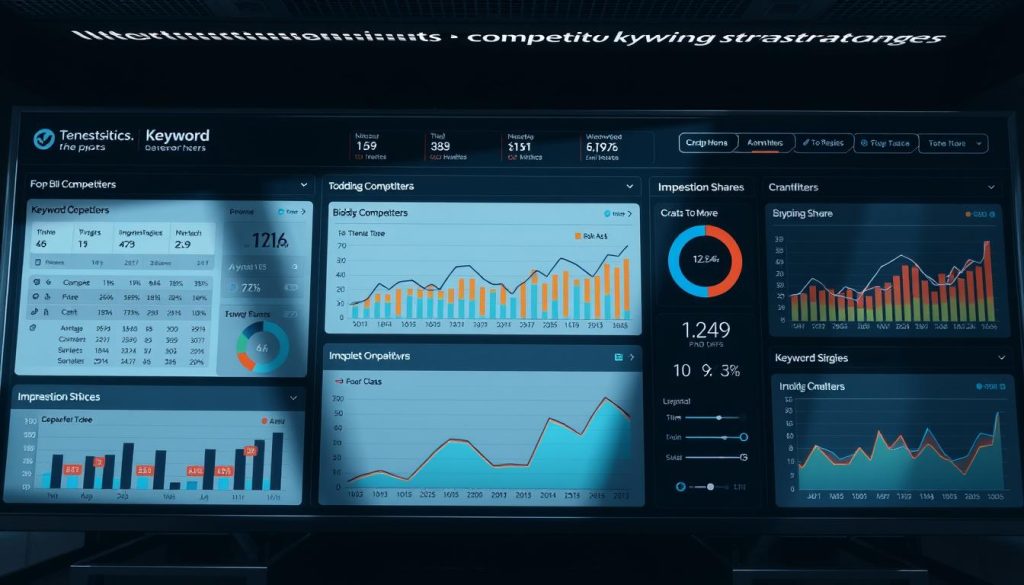Managing your advertising budget effectively requires a solid foundation for controlling costs while maximizing performance. A well-planned approach to paid search can make the difference between wasted dollars and impressive returns.
Many businesses struggle with overspending on digital campaigns without seeing meaningful results. The right methodology helps prevent budget waste and dramatically improves your advertising investment.
Understanding how paid search platforms work is essential for marketers at any level. Your decisions directly impact where your ads appear and how much you pay for each click.
This comprehensive guide covers everything from basic concepts to advanced techniques. Whether you’re new to digital marketing or looking to refine existing campaigns, you’ll find practical insights to apply immediately.
The relationship between your choices and ad placement determines campaign success. Making informed decisions about budget allocation leads to better outcomes across all search platforms.
Table of Contents
Key Takeaways
- A strategic approach forms the foundation for controlling advertising costs
- Proper planning prevents budget waste and improves return on investment
- Understanding paid search mechanics is crucial for campaign success
- Your decisions directly influence ad placement and overall performance
- This guide provides actionable insights for marketers at all experience levels
- Effective budget allocation leads to better advertising outcomes
- Practical knowledge can be applied immediately to improve results
Understanding the Fundamentals of Keyword Bidding Strategy
At the heart of every successful digital advertising campaign lies a fundamental understanding of how search platforms determine which ads get shown. This knowledge forms the bedrock of effective paid search management.
What Is Keyword Bidding?
Keyword bidding represents the core process where marketers specify the maximum amount they’re willing to pay for specific actions related to their advertisements. This approach allows businesses to target their spending toward achieving particular objectives.
Whether aiming for increased visibility, more conversions, or higher click-through rates, setting appropriate bids helps align your advertising efforts with business goals. The system operates through a competitive auction framework.

How the Auction Process Works
When users perform searches, an instant auction occurs behind the scenes. Google evaluates multiple advertisers’ offers alongside various quality factors to determine which ads appear in the search results.
The platform considers more than just the monetary amount offered. It assesses ad relevance, landing page quality, and the specific search context including device type, location, and time of day.
This system rewards those who create high-quality, relevant content rather than simply those with the largest budgets. Understanding these relevant keyword selection principles becomes crucial for campaign success.
Your payment model may vary based on your chosen approach—paying per click, impression, or conversion. This flexibility allows for tailored advertising strategies that match specific business objectives.
Manual vs. Automated Bidding Techniques
Digital advertisers face a fundamental choice between maintaining direct oversight and leveraging artificial intelligence for their campaign management. This decision impacts both time investment and campaign performance outcomes.

Exploring Manual Bidding Options
Manual CPC gives you complete control over maximum bids for each ad group or placement. This approach works well when you have specific performance data and want granular adjustments.
Enhanced CPC offers a hybrid solution that automatically adjusts your manual bids to maximize conversions. You maintain oversight while benefiting from some automated optimization.
This method requires significant time commitment but delivers precise control. It’s ideal for advertisers who know exactly which terms perform best.
Benefits of Automated and Smart Bidding
Automated bidding uses Google’s AI to handle bid decisions based on your goals. This saves considerable time while scaling campaigns effectively.
You can choose from several goal-oriented approaches. Maximize clicks focuses on driving traffic, while Target CPA optimizes for conversions at your desired cost.
Smart Bidding represents the most advanced automated option. It uses real-time signals like device type and location to optimize for conversions or conversion value.
Target ROAS helps maximize return on ad spend, and Target impression share ensures prominent ad placement. These automated approaches work best for advertisers seeking efficiency and scale.
Setting Up and Launching Your Google Ads Campaign
Launching a successful advertising effort requires careful setup from the very beginning. Proper configuration ensures your campaigns reach the right audience while staying within budget constraints.

Choosing the Right Keywords
Start with Google’s Keyword Planner to discover relevant terms. This tool shows average monthly searches, competition levels, and estimated costs.
For deeper insights, consider Semrush’s Keyword Magic Tool. It provides search volume data, cost-per-click metrics, and intent classification.
Focus on terms with commercial intent. These indicate users are ready to take action. Balance high-volume keywords with less competitive options to maximize your budget.
Step-by-Step Campaign Setup
Begin by selecting your campaign objective in Google Ads. Choose « Search » as your campaign type for text-based advertisements.
Google recommends different approaches based on your goals:
- Maximize Clicks for website traffic
- Target CPA for conversion-focused campaigns
- Maximize Conversion Value for high-value sales
Add your selected keywords to ad groups and create compelling ads. Set your daily budget based on your advertising goals and monitor performance regularly after launch.
Optimizing Ad Spend with Bidding Strategies for Different Goals
Matching your campaign objectives with appropriate bid management techniques ensures optimal spending efficiency. Different advertising purposes require distinct approaches to maximize results.
Strategies Focused on Conversions and Traffic
Conversion-focused approaches prioritize specific user actions. Target CPA helps maintain your desired cost per action while increasing conversions.
For maximizing revenue, Target ROAS optimizes for conversion value. This approach works well for e-commerce campaigns with clear revenue tracking.
Traffic generation strategies focus on website visits. Maximize Clicks automatically manages your bids to deliver the most clicks within your budget.
| Goal Type | Primary Focus | Best Strategy | Ideal Use Case |
|---|---|---|---|
| Conversion Optimization | Specific Cost Control | Target CPA | Lead generation campaigns |
| Revenue Maximization | Return on Spend | Target ROAS | E-commerce stores |
| Website Traffic | Click Volume | Maximize Clicks | New advertisers or content sites |
| Full Budget Utilization | Maximum Results | Maximize Conversions | Established campaigns with fixed budgets |
Manual CPC offers granular control for experienced advertisers. Enhanced CPC provides a hybrid approach that adjusts manual bids automatically.
Choose your approach based on whether you prioritize lead generation, sales revenue, or website traffic. Each method serves distinct advertising goals effectively.
Competitor Keyword Bidding Insights
Expanding your advertising reach often involves looking beyond your own brand terms to capture valuable search traffic. Targeting your rivals’ names can help you appear when potential customers search for alternatives.

This approach works particularly well in competitive markets like B2B and SaaS. You can attract users actively researching solutions similar to yours.
When to Bid on Competitor Brands
Consider this tactic when you offer comparable or superior products. Ensure your solution matches or exceeds what competitors provide.
Be prepared for potential bidding wars that may increase costs. Some businesses use these campaigns primarily for exposure purposes.
Avoid competitor campaigns if you lack clear advantages or have limited budgets. This approach may not suit advertisers wanting to avoid industry conflicts.
Crafting Persuasive Ad Copy and Landing Pages
Create dedicated campaigns with separate ad groups for each rival. Tailor your approach specifically for different competitors.
PPC expert Sophie Logan emphasizes unique considerations for these campaigns. You cannot use competitor names directly in your ads, requiring creative messaging.
Follow these setup steps for effective implementation:
- Identify your direct competitors
- Use Max Clicks with Max CPC limits
- Create PPC-specific landing pages
- Start with conservative budgets
Your landing pages should demonstrate advantages rather than just claiming superiority. Maintain respectful language while clearly presenting your value proposition.
Measuring Performance and Key Metrics
Your advertising results depend heavily on which performance indicators you choose to monitor. Different campaign goals require tracking specific data points to evaluate success properly.
Focus on metrics that directly reflect your business objectives. Lead generation campaigns need different tracking than e-commerce sales efforts.
Tracking Conversions and ROI
Monitor these essential metrics to gauge campaign effectiveness. Each provides unique insights into your advertising performance.
| Metric | Primary Focus | Ideal Campaign Type | Action Threshold |
|---|---|---|---|
| Lead-to-Sale Rate | Lead quality and sales conversion | Lead generation | Below 5% requires improvement |
| Conversion Rate | Customer action completion | All campaign types | Consistent decline needs attention |
| Return on Investment | Revenue versus spend | Sales-focused campaigns | Negative after 3 months = pause |
| Cost Per Conversion | Spending efficiency | Budget-conscious advertisers | Exceeding target requires adjustment |
When you see high clicks but few conversions, pause underperforming terms. Test stronger landing pages and more relevant ad copy.
For campaigns driving conversions but draining budgets quickly, focus on ad quality improvements. Better landing page experiences increase efficiency.
Monitor campaigns for 2-3 months before major changes. This provides sufficient data to evaluate true performance and make informed decisions.
Advanced Tips for Refining Your Bidding Tactics
Sophisticated advertisers achieve superior results by incorporating auction-time data that captures the unique context of each user search. Moving beyond basic setup requires understanding how real-time factors influence campaign performance.
Leveraging Auction-Time Bidding Signals
Smart Bidding uses multiple signals to optimize your approach. These include device type, location, time of day, and operating system data.
This technology analyzes the complete search context for better decisions. It helps advertisers achieve more efficient spending and improved outcomes.
| Bidding Option | Primary Purpose | Key Signals Used | Best For |
|---|---|---|---|
| vCPM | Display Network awareness | Viewable impressions | Brand visibility campaigns |
| Target Impression Share | Page position control | Search context | Top-of-page visibility |
| CPV | Video engagement | View interactions | YouTube advertising |
| Smart Bidding | Conversion optimization | Multiple real-time factors | Performance-focused campaigns |
Research competitor weaknesses on platforms like Reddit and G2. Use these insights to refine your keyword selection and landing page messaging.
Regularly evaluate competitor campaign performance. Pause underperforming ad groups to reallocate budget effectively.
Know when to stop campaigns that clearly aren’t working. Avoid the sunk cost fallacy by cutting losses on unsuccessful approaches.
Conclusion
Ultimately, your approach to paid search determines how effectively you connect with potential customers while managing costs. A thoughtful plan directly influences your advertising spend and the results you achieve.
Success requires understanding core principles and selecting methods that match your specific goals. Whether using manual control or automated systems, the right choice depends on what you want to accomplish.
Advanced tactics like targeting competitor terms can capture valuable traffic when executed carefully. Always track essential metrics like cost per acquisition and overall value to ensure positive returns.
Start with foundational methods and refine based on real performance data. For more detailed guidance on setting up effective campaigns, explore our comprehensive resource on PPC advertising.
No single method works for every situation. Your success comes from aligning your approach with your unique objectives, audience, and market conditions. Implement these insights to optimize your advertising investment and maximize outcomes for your specific product or service.
FAQ
What is a keyword bidding strategy?
A keyword bidding strategy is a plan for how much you are willing to pay for a user’s click on your Google Ads. It determines your ad’s position in search results and helps control your advertising costs to meet specific goals, like increasing sales or website traffic.
How does the Google Ads auction process work?
When someone searches, Google holds an instant auction. Your ad’s rank isn’t just about your maximum cost-per-click (CPC). It also considers your ad’s quality and relevance. A higher-quality ad can win a better position for a lower bid than a competitor with a higher bid but a poorer ad.
What is the difference between manual and automated bidding?
Manual bidding gives you full control to set individual bids for keywords. Automated or Smart Bidding uses Google’s machine learning to automatically adjust your bids in real-time to maximize conversions or conversion value based on your campaign’s historical data.
How do I choose the right keywords for my campaign?
Focus on terms that are highly relevant to your products and what potential customers are searching for. Use a mix of broad, phrase, and exact match types to balance reach and precision. Tools like Google’s Keyword Planner can help you find options with good search volume.
What bidding strategy should I use to increase sales?
For sales growth, use a strategy focused on conversions. Google’s « Maximize Conversions » or « Target CPA » are excellent choices. They automatically set bids to get the most purchases or actions within your target cost-per-acquisition.
Is it a good idea to bid on competitor brand names?
Bidding on competitor terms can be effective for capturing market share, but it often comes with a higher cost-per-click. Ensure your ad copy clearly highlights your unique value proposition and that your landing page is highly relevant to convince searchers to choose you.
What are the most important metrics to track?
A> Key metrics include conversion rate, cost per conversion, return on ad spend, and click-through rate. Tracking these helps you understand your campaign’s effectiveness and profitability, allowing for data-driven adjustments to improve results.
What are auction-time bidding signals?
Auction-time signals are real-time contextual factors that Smart Bidding considers, like the user’s device, location, time of day, and remarketing list membership. Leveraging these signals allows for more precise bid adjustments to reach people most likely to convert.





